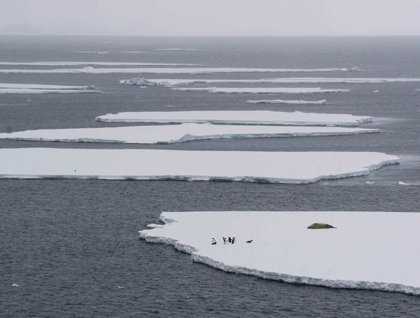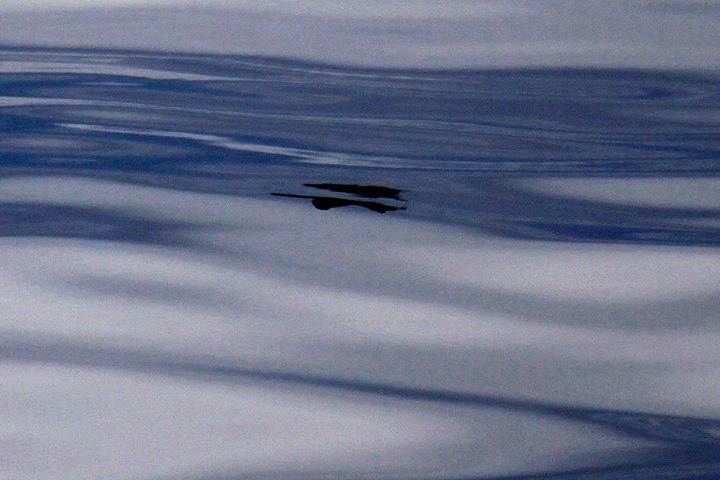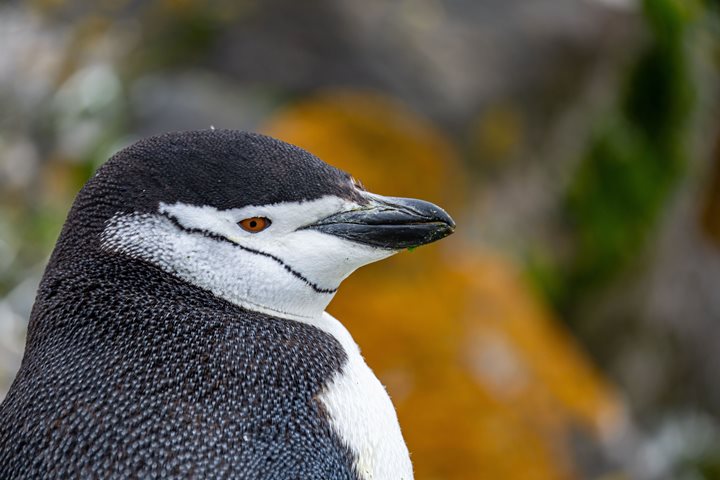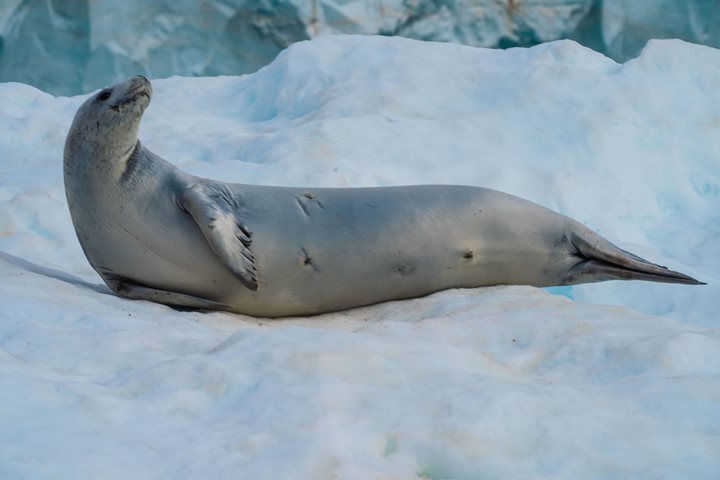Dawn broke as we made our way south towards the Antarctic Circle and beyond, with very little wind and visibility for miles to the horizon. The early risers were treated to the solitude and sense that we were in a different part of Antarctica. A mile or two from the ship on the horizon one could see scores of telltale blows of humpback whales feeding, taking advantage of the rich and productive Antarctic waters.
As the morning progressed we navigated into the more consistent sheets of ice floes and massive tabular icebergs stalled out here on their current and storm-driven journey around the continent. The cloud layer ahead foretold of snow showers and yet another mood shift from this fickle and wild place. The conditions may have made visibility worse for spotting marine mammals both in the water and hauled out on the myriad geometric floes but it also added an extra sense of diving into this polar climate, reaching beyond that which you can see.
Throughout the day we must have seen well over a thousand crabeater seals – the most abundant of all seals – hauled out and molting in the late summer. Hundreds of elegant snow petrels glided and sailed around the icy castles, their all-white plumage at times standing out in this all-white world of snow and ice.
Having crossed the threshold of that hard-to-reach line at the bottom of the earth, that being 66°33', we pushed more southward till we could go no further. That point being the edge of the fast ice, winters sea ice still held “fast” to the shore. We had navigated through some very recent large floes of sea ice which must have only broken free days ago. Our hopes were to locate some “pack-ice” killer whales or “Big B’s” as they're called, but no luck there.
We did, however, spot and get a very good look at an even more elusive Antarctic resident. Our AB Edgar, a man known for his spotting skills, calmly called out while still peering through the binoculars, “I think I see a really big bird on the edge of the ice.” All of us, the staff and crew, knew exactly what Edgar had seen: an Emperor Penguin, the largest of all living penguin species. They're not rare by numbers but rare and hard to see this time of the year when they have long ago left their breeding colonies and have spread out to molt and spend the remainder of summer recovering from their long winter’s vigil on the ice. This lone bird stood at the edge of the ice and with little or no concern allowed us to approach ever and ever closer.
It was important that our guests realize just how very special this observation was and just how very few people in the world have seen these birds in the wild, so at Recap that evening naturalist Stefan Lundgren provided more insight into our sighting and talked about their incredible breeding biology here in the Antarctic.
Our furthest point south came to 67°07' before we met fast ice and needed to return to the north and set our course for tomorrow’s adventures. All on board had gained a greater appreciation for what this icy world at the bottom of the planet has to offer and why it so very special a place to protect and preserve.




.jpg?width=106&height=85&mode=crop&scale=both&quality=50)


